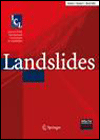Resource
Global landslide and avalanche hotspots
Description
Allocating resources for natural hazard risk management has high priority in development banks and international agencies working in developing countries. Global hazard and risk maps for landslides and avalanches were developed to identify the most exposed countries. Based on the global datasets of climate, lithology, earthquake activity, and topography, areas with the highest hazard, or “hotspots”, were identified. The applied model was based on classed values of all input data. The model output is a landslide and avalanche hazard index, which is globally scaled into nine levels. The model results were calibrated and validated in selected areas where good data on slide events exist. The results from the landslide and avalanche hazard model together with global population data were then used as input for the risk assessment. Regions with the highest risk can be found in Colombia, Tajikistan, India, and Nepal where the estimated number of people killed per year per 100 km2 was found to be greater than one. The model made a reasonable prediction of the landslide hazard in 240 of 249 countries. More and better input data could improve the model further. Future work will focus on selected areas to study the applicability of the model on national and regional scales.